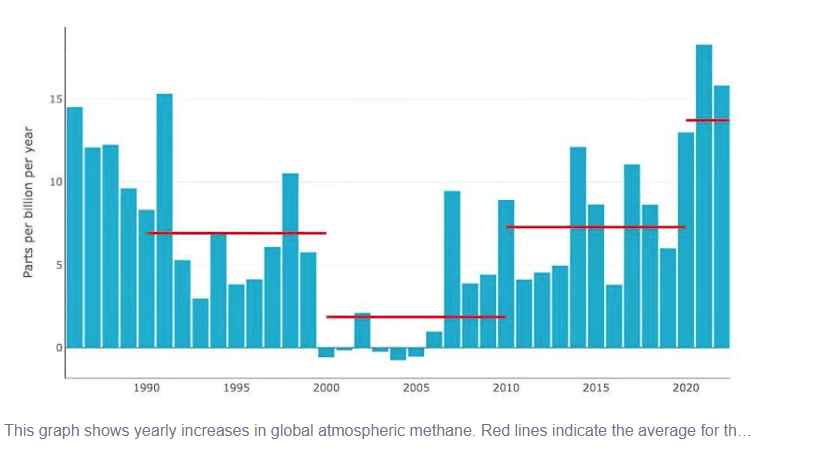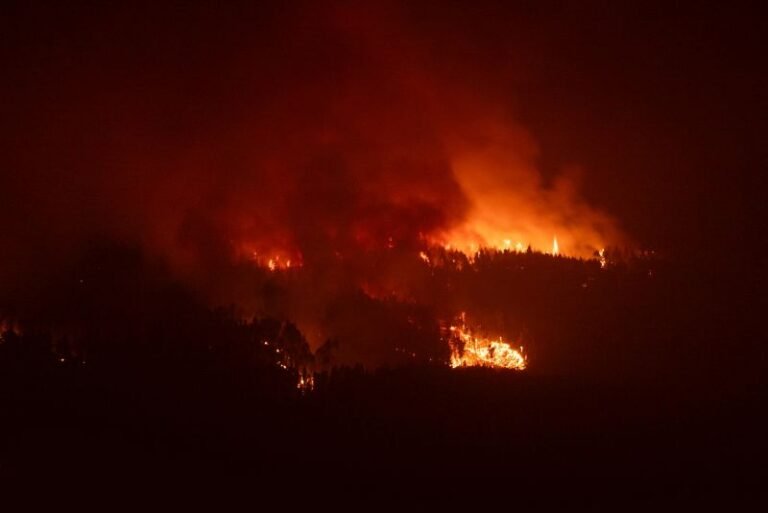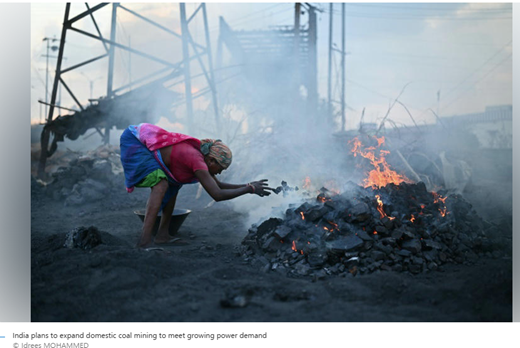Methane emissions are at new highs
Methane emissions are at new highs. It could put us on a dangerous climate path (phys.org)
Methane emissions are at new highs. It could put us on a dangerous climate path
Climate Warming Power of Methane
Methane is responsible for the 0.5 of the 1.2C temperature rise and the above article illustrates, the rate of methane emissions is rising fast. During the 2000s, an extra 6.1 million tons of methane entered the atmosphere each year. By the 2010s, that grew to 20.9 million tons per year. In 2020, growth hit 42 million tons – that is a doubling of emissions in less than 10 years.
Since then, methane has been added even more rapidly. Growth rates are now higher than any previously observed year.- Human activities all together contribute about 65% of all methane emissions, from such activities as farming livestock, coal mining, extracting and handling natural gas, growing rice in paddies, and putting organic waste in landfills, . Of this, agriculture (livestock and rice paddies) contributes 40%, fossil fuels 36%, and landfills and wastewater 20%.
This all matters because methane traps heat x84 times more than the equivalent amount of carbon dioxide in the first 20 years in the atmosphere although it is a relatively shortlived greenhouse gas in the atmosphere and rapidly breaks down but even over a 100 year period it has up to x34 the global warming potential of CO2.
Potential for methane reductions to make a real difference
So the growing volume of methane in the atmosphere is playing a major part in destablising the Earth’s climate. However the reverse, positive news is that cutting methane emissions would represent a very quick win as the volume remaining in the atmosphere breaks down relatively quickly. However its sources are not so easy to eliminate – farting cows and rice paddy fields relate to our diets so no easy win there.
Emissions from Oil and gas could be dealt with more simply but despite the commitment at CoPs to cut 30% by 2030 and regulatory controls being introduced in the US, no sign that that is being widely implemented or having much effect.
Still the potential remains due to the atmospheric life-span of making an immediate impact if we could get our act together on this. One good sign is the ability of satellites to monitor methane emissions as a first step of getting to grip with this problem satellites to monitor methane emissions as a first step of getting to grip with this problem.
It looked like that finally there would be some concerted action to curb methane emissions recognising the ‘quick win’ potential for the climate with the Global Methane Pledge, a commitment by the US and the EU back at the COP26 in 2021 to reduce methane emissions by 30% by 20305. As of January 2025, this counted 159 state participants.
But the US rows back, for now
Unfortunately the leading commitment of the USA, or at the least the necessary actions to fulfil its commitment has fallen as another victim of the Trump roll back on climate action in the US, particularly his weakening of rules related to pipeline and storage leakage. The Trump administration has argued, strongly backed by the oil industry (the leading donor to his successful presidential election campaign), that the regulations were burdensome for the energy and cheap supply. How that will impact the commitment of the other countries and the EU to the Methane Pledge has yet to be seen but it is not encouraging.
It may take further climate extremes and breakdown before the real dangers of climate heating hits home to people. When it does, serious cuts to methane emissions will remain as one of the few immediately impactful actions that can be taken. The hope is that realisation will come sooner rather than later as the world tips ever close to the threshold of dangerous levels of global heating.







